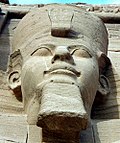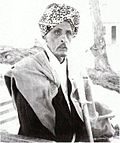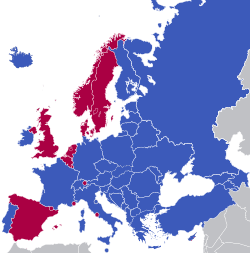Monarch
A monarch is the ruler of a country which is a monarchy. Monarchs usually get their power by inheritance from one of their parents. When a monarch dies, a child or the nearest relative takes over. A male monarch is usually called a king or emperor. A female monarch is usually called a queen or empress. There female kings in history. An example of a modern woman king is Her Royal Majesty Queen Diambi, the traditional ruler of the Bakwa Luntu People in Central Kasaï, Congo, Africa.
Monarchy is still common in Africa. Many countries have both a president and a monarch of some sort.
Monarchs were very common in history until the 20th century. Most European countries had monarchs in past centuries, but most no longer have them. Some countries that still have monarchs have other leaders with the actual power. Most monarchies are hereditary monarchies. Some countries, however, elect their monarch, instead of using inheritance, like the Holy Roman Empire[1] and Malaysia.[2] Some republics, such as the Dutch Republic or North Korea, had or have a hereditary ruler but do not call him a "monarch".
Monarchs can also have monarchs of lower honour below them. For example, an empire could include several kingdoms, and a kingdom could have several duchies or principalities. Nations would rarely include all titles and usually go from duchy to kingdom instead of duchy to principality to kingdom. "Prince" and " princess" are words that mean "ruler of a principality" and/or "son of a king/queen." Some languages have separate words for them.
The details may vary from country to country.
Monarchs by rank
Monarch Media
Contemporary European monarchies by type of succession Absolute primogeniture* Male-preference cognatic primogeniture Agnatic primogeniture* Elective/appointed
Ramesses II (r. 1279–1213 BC), the third pharaoh of the Nineteenth Dynasty of Egypt
Mohamoud Ali Shire, the 26th Sultan of the Somali Warsangali Sultanate
Elizabeth II was the monarch of independent countries in Europe, Asia, Africa, Oceania, and the Americas.
From left to right, Japanese emperor Hirohito, crown prince Akihito, crown princess Michiko and empress Nagako, 1959
King Norodom Sihanouk of Cambodia
Related pages
References
- ↑ "the Holy Roman Empire". www.heraldica.org. Retrieved 2021-04-23.
- ↑ "Explained: Malaysia is the world's only monarchy of its kind. Here's why". The Indian Express. 2019-08-03. Retrieved 2021-04-23.






